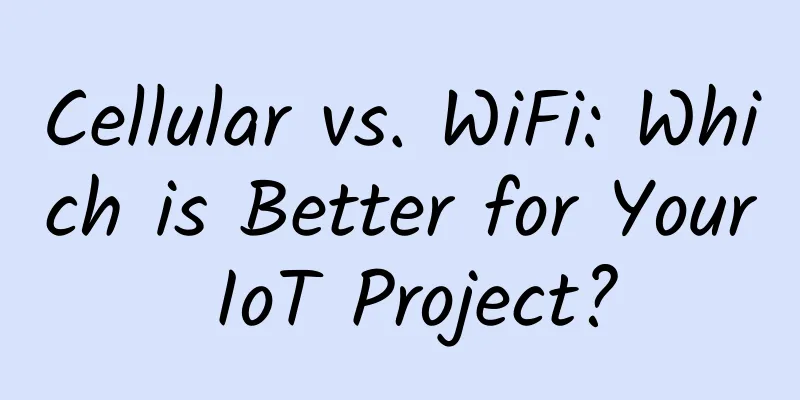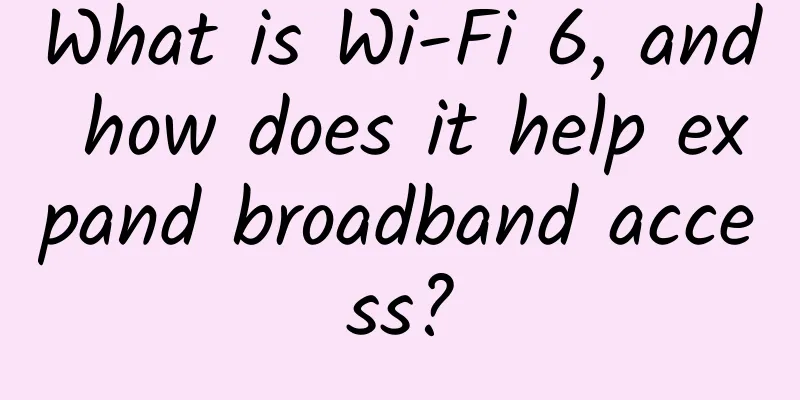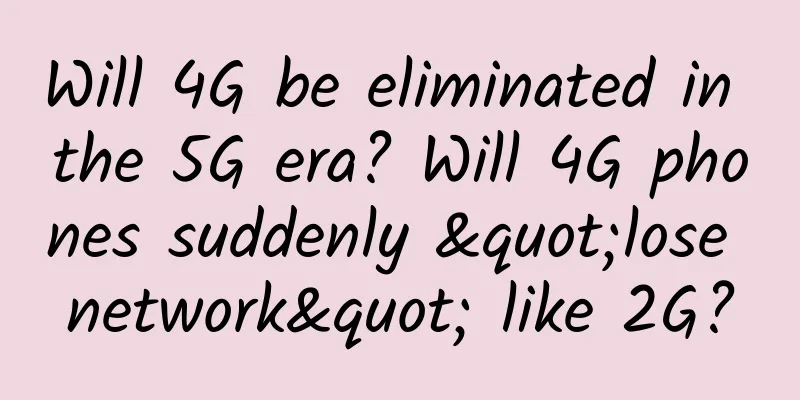Cellular vs. WiFi: Which is Better for Your IoT Project?

|
As the name implies, Internet of Things (IoT) devices need a stable, secure way to connect to the internet to communicate and exchange data. However, the choice between WiFi and cellular connectivity is not always clear. WiFi and cellular are the two most popular wireless technologies that make IoT networks possible—they provide the “I” in “IOT.” While WiFi has been the primary choice for IoT for many years, cellular has grown in popularity and is now a highly viable alternative. In this article, we’ll discuss the pros and cons of WiFi and cellular IoT networks to help you decide which one to use for your next IoT project. IoT Wireless NetworkWiFi technology uses radio waves in multiple frequency bands to transmit information between devices. In order to achieve a WiFi connection, the device must have a wireless adapter that converts data and radio signals. The device communicates with the adapter chip using a protocol such as UART or SPI. The adapter then communicates with an external router, which sends this data to the Internet via a wired Ethernet connection. The three components of the system—the device, the chip, and the router—must conform to the same WiFi standard, such as WiFi 7 or 802.11ax (also known as WiFi 6). IoT Cellular NetworksIoT devices using cellular technology connect to the internet using the same network as smartphones and other mobile devices. These devices are equipped with a modem that communicates with the nearest cell tower, facilitating the transfer of information. Low-level communication protocols such as UART or SPI are used to control the modem. LTE-M (Long Term Evolution for Machines) and NB-IoT (Narrowband IoT) are two popular cellular IoT technologies. LTE-M offers faster speeds and is compatible with existing LTE infrastructure, while NB-IoT requires cellular providers to upgrade their hardware, resulting in slower deployment. In addition, NB-IoT offers wider coverage but requires devices to remain stationary. WiFi vs. Cellular: Comparing IoT CapabilitiesThis section will take a deeper look at how WiFi and cellular networks stack up in terms of different functions of IoT devices. costCellular networks tend to be much more expensive per bit than WiFi. Therefore, WiFi is a preferable option when you plan to transfer a lot of data (such as regular security updates). In addition, you can sometimes "piggyback" on an existing public or private WiFi network to save costs. Security and PrivacyCellular networks have two major security advantages over WiFi: Cellular data is encrypted by default, while WiFi connections must have encryption enabled. Cellular security updates are handled by providers with dedicated network security staff who prioritize security due to financial and reputational incentives. In contrast, WiFi security relies on individual WiFi network owners to proactively install updates. While cellular networks are generally held to higher security standards, a well-maintained private WiFi network can provide comparable security. Position detectionBoth WiFi and cellular networks can provide accurate location information by measuring your distance from the nearest router or cell tower, respectively. In some cases, cellular networks may be able to determine your location when you are out of WiFi range. CoverageCellular network coverage is extensive and continues to expand. Cellular IoT technologies such as LTE-M and NB-IoT provide deeper coverage than traditional cellular technologies, reaching places such as underground areas, metal buildings, and rural environments. WiFi has a limited range and is more easily blocked by obstacles. As a local area network (LAN), WiFi can provide strong coverage in a limited area close to the access point. However, once the device leaves the area, connectivity quickly degrades. In other words, if the device is highly mobile or deployed in a remote location, WiFi is not the best choice. bandwidthWiFi and cellular networks now offer comparable maximum speeds, although achieving those speeds on cellular networks can be more expensive. WiFi has traditionally outperformed cellular networks in terms of bandwidth, with older WiFi standards (802.11b/g/n) offering speeds of up to 450 megabits per second and the newer WiFi 6 (802.11ax) standard offering speeds of up to 9 gigabits per second. Cellular technology based on the 5G standard can theoretically reach speeds of up to 20 Gbps, making cellular bandwidth comparable to WiFi. As mobile technology advances, cellular networks are sufficient for almost all IoT use cases. WiFi does have one drawback: the more devices that try to access the network, the worse the WiFi signal becomes. This means that WiFi performs significantly worse in densely populated areas as devices compete for bandwidth. Cellular networks don’t typically face this problem, thanks to the technology’s underlying protocols and hardware. Power UsageBoth cellular and WiFi technologies can consume significant power if not properly managed to conserve battery life. However, WiFi usage is likely to be less in general. Device manufacturers deal with these issues in two ways: either by putting the device to sleep and waking it up periodically, or by disabling the connection when not in use. WiFi vs Cellular Networks Diagram WiFi vs. Cellular: Which is Better for Your IoT Project?As we discussed, there are many factors and variables that can make this decision more complicated than it initially seems. Both technologies are used to solve different types of challenges, and no one technology has universal advantages. While WiFi or cellular may be the obvious choice in some cases, business requirements can complicate matters. For example, deploying IoT devices in third-party retail stores that may not provide WiFi credentials may influence the decision. You may even find yourself choosing not which technology to use, but which one to use first. Many IoT products use both cellular and WiFi to provide backup in case the primary technology fails. For your IoT project, choosing WiFi or cellular will largely depend on the priorities of your device and its purpose. Ultimately, the decision will come down to the trade-offs between power consumption, bandwidth, coverage, and security. |
<<: Learn Python network programming from scratch: Explore TCP protocol and example demonstrations!
>>: The 6th SD-WAN & SASE Conference and Cloud Network Conference 2023 was successfully held
Recommend
Want to migrate to the cloud at a low cost? Of course, you can’t miss the best money-saving strategy on 11.11!
[51CTO.com original article] The 2018 11.11 Shopp...
Can the commercial trial of 5G messaging truly open the door to the 5G economy?
At the "2021 China International Information...
In-depth analysis of common three-way handshake exceptions
[[416112]] This article is reprinted from the WeC...
Amid COVID-19, have we neglected border security?
[[342703]] The coronavirus pandemic has triggered...
The Best Open Source Network Monitoring Tools of 2017
The demand for open source software continues to ...
What is the relationship between NFV and SDN?
NFV and SDN are popular technologies that have em...
"6G Wireless Hotspot Technology Research White Paper" (2020) released
The information and communication industry is a s...
Wi-Fi Sense: Your home's next sensor may not be a sensor
Part 01 How Wi-Fi Sensing Works Wi-Fi sensing is ...
MIIT releases 5G spectrum planning, China launches mid-band 5G commercialization
On November 15, the Ministry of Industry and Info...
The rapid development of 5G technology brings more innovative applications to the automotive industry
Industry experts point out that in order to meet ...
The role of 5G in education: enabling distance learning and virtual labs
In an era of rapid technological change, 5G is mo...
Three major operators: 5G package user penetration rate will exceed 60% in 2022
On March 13, China Telecom Corporation Limited an...
The future of industrial communications: embracing the power of 5G and the Internet of Things
The future of industrial communications is on the...
my country's total 5G base stations account for more than 60% of the world's total
The 2021 Communications Industry Statistical Bull...
Huawei's bank-level temperature control market share in China ranks first and continues to lead
During the 4th Data Center Infrastructure Summit ...









